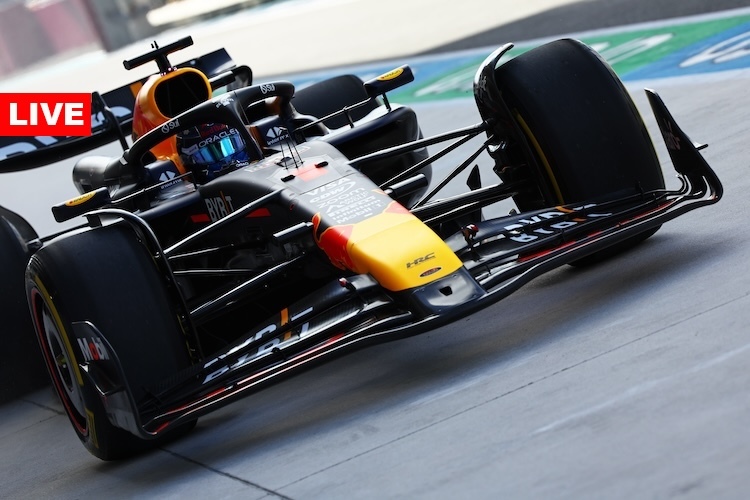#age #maturity #renal #denervation
Paris, France – In renal denervation, therapeutic trials with 2nd generation catheters have established proof of a lasting reduction in blood pressure, whatever the severity of the arterial hypertension, independently of the use of anti-hypertensives.
The technique, which was almost abandoned around ten years ago, has even just been integrated into the therapeutic arsenal for the management of patients with uncontrolled hypertension, as recorded in the European recommendations.
Professor Atul Pathak, head of the cardiology department at the Princess Grace Hospital Center in Monaco, retraces the long, difficult but successful path to renal denervation.
The prevalence of high blood pressure (hypertension) is estimated at 31% of the French adult population, or approximately 17 million people. Despite the diversity of classes of antihypertensive drugs, control of hypertension is insufficient due to several factors, notably patients’ non-adherence to therapy and therapeutic inertia. It is in this context that endovascular renal denervation was developed (see box on the principle of the process at the end of the text).
The first randomized controlled trials using 1st generation catheters gave heterogeneous results in terms of blood pressure effectiveness (SYMPLICITY HTN2 and 3, etc.). What is the situation in 2024, following trials with 2nd generation catheters?
Currently, radiofrequency and ultrasound are the two techniques available in France with, in recent months, the reimbursement of the RF catheter. Since 2017, therapeutic trials have been conducted with 2nd generation catheters using focused ultrasound (RADIANCE program) or radiofrequency (SPYRAL program). From 2017 to 2023, 6 randomized controlled trials conducted in patients with moderate hypertension or treatment-resistant hypertension consistently showed a clinically relevant reduction in blood pressure in the short, medium and long term after DR with a blood pressure catheter. 2nd generation optimized using UF or RF compared to a simulated intervention (sham).
Two types of trials were conducted, some evaluating the effect of DR in subjects unaffected by any treatment (RADIANCE SOLO and SPYRAL OFF MED trials), others evaluating the effect of DR on BP in subjects treated (SPIRAL ON MED (DR RF)”, or “RADIANCE TRIO (DR UF)”).
We systematically observe, in these two types of trials, a reduction in systolic and diastolic pressure, from the first three months, with persistent effects up to six months or even longer.
These consecutive results demonstrate that both in moderate and severe hypertensives, whether or not they are treated with anti-hypertensives, these UF and RF catheters have the capacity to reduce blood pressure, which has supported their request for reimbursement in Europe and in the USA.
What is the extent of the blood pressure reduction thanks to DR?
With DR isolated or in conjunction with anti-hypertensives, the blood pressure drop is around 8 to 10 mmHg for systolic pressure and 4 to 5 mmHg for consultation diastolic pressure. This reduction is consistent between the different studies, confirmed by ABPM measurements, and approximately equivalent to the effect of one to two anti-hypertensive drugs.
How persistent are these effects over time?
The hindsight we currently have is three years or more. One would think that reinnervation would occur over time, attenuating the effects of DR with a re-ascension of blood pressure numbers. However, while nerve connection can occur, the function of the nerve, as a neurohumoral, electrical and chemical structure, is more complex, with inadequate or poorly targeted release of neurotransmitters. The results that we observe from the follow-up at 6 and 12 months, then 2 years, and now 3 years show that BP not only does not rise, but that there is even an amplification of this effect, with a tendency to the decline in BP over time.
Isn’t it because the patients started taking treatments again?
Analyzes were conducted to evaluate the number of medications taken by patients compared to the start of follow-up. They found that the persistence of the effect of denervation was not linked to increased use of new pharmacological treatments. Follow-up publications over periods of up to 8, 9 and 10 years, with 1st generation catheters, confirmed the persistence of the effect without change in the number of drugs prescribed.
What about morbidity and mortality studies today involving renal denervation?
There is no morbidity and mortality study because this would require, given the low event rate in treated hypertensives, to recruit more than 80-90,000 patients to hope to detect a clinically significant effect in this cohort. Decrease in BP is considered to be a relevant clinical criterion. Studies also show that lowering BP by DR leads to a reduction in target organ damage; these two effects suggesting a potential benefit in reducing cardiovascular morbidity and mortality.
What do the European recommendations say in 2024?
In 2024, DR may be offered as a therapeutic option in adult patients with uncontrolled hypertension despite well-conducted treatment or if medications cause adverse effects or an impairment of quality of life (IIB). DR is a treatment that can be offered to resistant hypertension, i.e. patients with uncontrolled BP despite treatment with at least three antihypertensive medications at maximum tolerated dose (combining renin-angiotensin system blocker, DHP). / dihydropyridine and thiazide diuretic). In all cases, the estimated glomerular filtration rate must be greater than or equal to 40 ml/min/1.73 m2. DR can be discussed for patients who cannot tolerate long-term antihypertensive medications and express their preference to have DR in a shared decision-making process. The decision-making process should also include communication with the patient. This must be evaluated in an expert center to exclude causes of secondary hypertension.
Why limit this intervention only to uncontrolled patients, to those who refuse medications or who have compliance problems?
To date, the indications for DR are quite broad when we look at the documents of European learned societies (ESH [1]EAPCI [2]). In France, reimbursement is limited to RF catheters in uncontrolled resistant hypertensives despite quadruple therapy. This proposal seems wise. In fact, this already corresponds to a target population of 50,000 patients and logistics must be able to keep up! When the technique is installed, we can consider an extension of the indications with, as a prerequisite, the integration of this offer within the framework of a course which must be supported by specialists in hypertension and dedicated structures of excellence in order to offer “the right technique to the right patient”.
It is indeed possible that the technique will develop further over time. DR is an additional tool in the optimization of blood pressure treatment alongside drugs, an area where new molecules are also expected in the relatively near future.
In the coming weeks, a French consensus will be published to organize the care pathway linked to renal denervation.
The principle of renal denervation (RD)
“As high blood pressure results, among other things, from sympathetic hyperactivity, the objective is to reduce the latter, with the corollary of reducing blood pressure. Until now, several drugs such as alpha-blockers or beta-blockers have been introduced to reduce sympathetic activity in a direct way. Others act on this same system but indirectly, such as blockers of the renin angiotensin system. The idea of blocking the sympathetic system using a non-drug option dates back to the 1950s when surgeries aimed to cut certain lumbar sympathetic fibers, certainly with an effectiveness in reducing BP but with many complications (difficulties of erections, hypotension and bladder instability, etc.) which put an end to the development of this approach. Renal denervation is part of this continuity, namely blocking the sympathetic system in a non-pharmacological and more selective way than surgery.
Concretely, under sedation, the interventional cardiologist proceeds with the retrograde femoral introduction of the DR catheter into each renal artery in order to ablation of the afferent and efferent sympathetic nerve fibers, which travel in the adventitia of the renal arteries. This is accomplished by delivering focused ultrasound (UF) or low intensity radio frequency (RF) current. Another catheter, currently under development, performs chemical neurolysis following the microinjection of ethanol into the renal arterial adventitia.”
Links of interest from experts: Atul PATHAK has received support for research and participation in conferences from MEDTRONIC, RECOR and ABLATIVE SOLUTION
LIENS
Register for newsletters de Medscape : select your choices








:quality(85)/cloudfront-us-east-1.images.arcpublishing.com/infobae/7NN5W3NJKZAGTGCWCFODBQJUQY.jpg)


